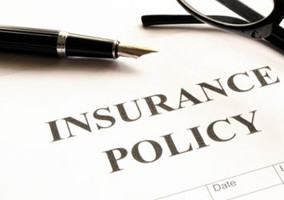If the past year has taught us anything, it’s to expect the unexpected. Especially if you are a charity who runs on a tight budget, working to help those who are often disadvantaged in their community. In the event of a serious incident, people still need you, and probably more so than ever before.
As a charity, it is especially important to have an airtight business continuity plan ready, in case disaster strikes. We hope it’ll never happen, but if it does you’ll be so glad you had a plan in place so you can get back to the day-to-day running of your charity as soon as possible.
In this blog Ansvar shares how to create your own plan to make sure you never get caught out.
Carry out a risk assessment
You know the age-old saying, prevention is always better than cure, and this instance is no exception. Make sure you carry out an in-depth risk assessment so you can be aware of the possible events that could occur at your charity. This is your very first step into having a robust business continuity plan!
We highly recommend using your staff to carry out this assessment because they will be the ones with the most relevant knowledge. They will be the ones who know what the most time-sensitive priorities will be, to get up and running again in the event of a disaster.
Create a committee
Now you know the what, you need to decide on how you’ll prepare for if they do happen, and who is responsible for the different actions. You should clearly define the roles and responsibilities of individuals within your charity to respond to any event that may occur. Make sure all main areas of your charity or organisation are represented and that they know exactly what is expected of them.
In addition to the team, there should also be a named individual who takes overall responsibility for this plan; ideally someone senior, who has authority to make decisions.
Prioritise actions
Now you know what the risks are and who is in charge of action in the event of an incident, you should now create a prioritised list with what you should do in the first 24 hours (your emergency response), and the recovery plan. Please click here to view Ansvar’s risk guide which details many of the aspects you should consider.
This list should include the timescale of how long each item will take, who’s in charge of that item, what budget is available (if applicable) and how it is accessed.
This document should be easily accessed and easy to follow. It may sound like a lot of information to collate, but once you see it written down, you’ll realise just how much of this makes good sense.
Ensure this whole assessment and plan is communicated to all of your personnel so they are all aware of what should be done in the event of an incident.
Test, review, and test again
It is really important that you test this plan periodically and review it too, to ensure the steps you have detailed are still appropriate, and the person in charge is still capable of carrying out their assigned tasks. We suggest a full review should be done at least once a year, but please remember to think of your business continuity plan as a living document! It should be constantly evolving as your charity’s needs change over time.
This kind of proactive approach really will save a huge amount of stress when something happens!
Remember to review Ansvar’s business continuity risk guide for more in-depth advice as to how to create your own, and if you’re in doubt, reach out to your insurance broker who will be able to give you more tailored guidance.
Sarah Cox is the Managing Director of charity and faith insurance specialist, Ansvar, the sponsors of this piece.
Related articles












